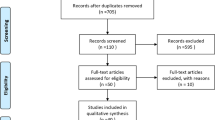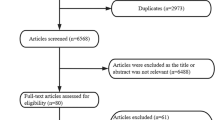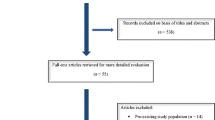Abstract
Introduction
Previous meta-analyses comparing microsurgery and coiling that include BRAT may be inaccurate to compare the outcomes of ruptured saccular aneurysms. This study aims to evaluate 10-year efficiency, safety, and advantages of coiling compared with clipping in patients with spontaneous saccular aneurismal SAH as a primary outcome. Also analyzed secondary outcomes: no-occlusion, mortality, rebleeding, and retreatment.
Methods
A systematic search of the literature on microsurgical clipping versus coiling was done to identify RCTs with at least 10 years of follow-up published between 2000 and 2021. The primary outcome was favorable functional outcome, defined as a modified Rankin scale (mRS) score ≤ 2. Secondary outcomes were no-occlusion, mortality, rebleeding, and retreatment. Quality of the included trials was analyzed using the Risk of Bias 2.0 (RoB 2.0) tool. A random-effects meta-analysis was performed.
Results
Two studies reported 10-year follow-up results, and the meta-analysis did not demonstrate significant differences between groups (OR 0.9, 95%CI 0.66–1.24, I2 = 21%). No differences were observed compared clipping and coiling regarding occlusion rates (OR 5.3, 95%CI 0.8–36.3, I2 = 89%). Mortality rates did not show significant differences between treatment modalities (OR 0.97, 95%CI 0.77–1.21, I2 = 0%). Rebleeding rates were also similar between groups (OR 1.63, 95%CI 0.25–10.7, I2 = 37%); however, significantly higher retreatment rates were associated with coiling (OR 10.6, 95%CI 2.1–52.5, I2 = 80%). Overall, risk of bias was low.
Conclusion
There are no long-term differences regarding no-occlusion, mortality, and rebleeding rates between coiling and clipping. Higher retreatment rates were associated with coiling.







Similar content being viewed by others
Data availability
All data is available within the article.
Change history
11 June 2022
A Correction to this paper has been published: https://doi.org/10.1007/s10072-022-06202-9
References
Molyneux A, Kerr R, Stratton I et al (2002) International Subarachnoid Aneurysm Trial (ISAT) of neurosurgical clipping versus endovascular coiling in 2143 patients with ruptured intracranial aneurysms: a randomised trial. Lancet 360(9342):1267–1274. https://doi.org/10.1016/S0140-6736(02)11314-6
McDougall CG, Spetzler RF, Zabramski JM et al (2012) The barrow ruptured aneurysm trial: Clinical article. J Neurosurg 116(1):135–144. https://doi.org/10.3171/2011.8.JNS101767
Lindgren A, Vergouwen M Di, van der Schaaf I, et al (2018) Endovascular coiling versus neurosurgical clipping for people with aneurysmal subarachnoid haemorrhage. Cochrane Database Syst Rev 2018(8). https://doi.org/10.1002/14651858.CD003085.pub3
Brinjikji W, Rabinstein AA, Nasr DM, Lanzino G, Kallmes DF, Cloft HJ (2011) Better outcomes with treatment by coiling relative to clipping of unruptured intracranial aneurysms in the United States, 2001–2008. Am J Neuroradiol 32(6):1071–1075. https://doi.org/10.3174/ajnr.A2453
Renowden SA, Beneš V, Bradley M, Molyneux AJ (2009) Detachable coil embolisation of ruptured intracranial aneurysms: a single center study, a decade experience. Clin Neurol Neurosurg 111(2):179–188. https://doi.org/10.1016/j.clineuro.2008.09.026
Sturiale CL, Brinjikji W, Murad MH, Lanzino G (2013) Endovascular treatment of intracranial aneurysms in elderly patients: a systematic review and meta-Analysis. Stroke 44(7):1897–1902. https://doi.org/10.1161/STROKEAHA.113.001524
Elhadi AM, Zabramski JM, Almefty KK et al (2015) Spontaneous subarachnoid hemorrhage of unknown origin: hospital course and long-term clinical and angiographic follow-up. J Neurosurg 122(3):663–670. https://doi.org/10.3171/2014.10.JNS14175
Suzuki S, Kurata A, Yamada M et al (2011) Outcomes analysis of ruptured distal anterior cerebral artery aneurysms treated by endosaccular embolization and surgical clipping. Interv Neuroradiol 17(1):49–57. https://doi.org/10.1177/159101991101700108
Hoh BL, Chi YY, Dermott MA, Lipori PJ, Lewis SB (2009) The effect of coiling versus clipping of ruptured and unruptured cerebral aneurysms on length of stay, hospital cost, hospital reimbursement, and surgeon reimbursement at the University of Florida. Neurosurgery 64(4):614–619. https://doi.org/10.1227/01.NEU.0000340784.75352.A4
Spetzler RF, McDougall CG, Albuquerque FC et al (2013) The barrow ruptured aneurysm trial: 3-year results: clinical article. J Neurosurg 119(1):146–157. https://doi.org/10.3171/2013.3.JNS12683
Spetzler RF, McDougall CG, Zabramski JM et al (2015) The Barrow Ruptured Aneurysm Trial: 6-year results. J Neurosurg 123(3):609–617. https://doi.org/10.3171/2014.9.JNS141749
Spetzler RF, Zabramski JM, McDougall CG et al (2018) Analysis of saccular aneurysms in the Barrow Ruptured Aneurysm Trial. J Neurosurg 128(1):120–125. https://doi.org/10.3171/2016.9.JNS161301
Spetzler RF, McDougall CG, Zabramski JM et al (2020) Ten-year analysis of saccular aneurysms in the Barrow Ruptured Aneurysm Trial. J Neurosurg 132(3):771–776. https://doi.org/10.3171/2018.8.JNS181846
Sterne JAC, Savović J, Page MJ et al (2019) RoB 2: A revised tool for assessing risk of bias in randomised trials. BMJ 366:l4898. https://doi.org/10.1136/bmj.l4898
Kim BM, Kim DI, Shin YS et al (2008) Clinical outcome and ischemic complication after treatment of anterior choroidal artery aneurysm: COMPARISON between surgical clipping and endovascular coiling. Am J Neuroradiol 29(2):286–290. https://doi.org/10.3174/ajnr.A0806
Natarajan SK, Sekhar LN, Ghodke B, Britz GW, Bhagawati D, Temkin N (2008) Outcomes of ruptured intracranial aneurysms treated by microsurgical clipping and endovascular coiling in a high-volume center. Am J Neuroradiol 29(4):753–759. https://doi.org/10.3174/ajnr.A0895
De Los RK, Patel A, Bederson JB, Frontera JA (2013) Management of subarachnoid hemorrhage with intracerebral hematoma: clipping and clot evacuation versus coil embolization followed by clot evacuation. J Neurointerv Surg 5(2):99–103. https://doi.org/10.1136/neurintsurg-2011-010204
Li ZQ, Wang QH, Chen G, Quan Z (2012) Outcomes of endovascular coiling versus surgical clipping in the treatment of ruptured intracranial aneurysms. J Int Med Res 40(6):2145–2151. https://doi.org/10.1177/030006051204000612
Lanzino G, Fraser K, Kanaan Y, Wagenbach A (2006) Treatment of ruptured intracranial aneurysms since the International Subarachnoid Aneurysm Trial: practice utilizing clip ligation and coil embolization as individual or complementary therapies. J Neurosurg 104(3):344–349. https://doi.org/10.3171/jns.2006.104.3.344
Figueiredo EG (2010) The ISAT. again... World Neurosurg 73(6):601–603. https://doi.org/10.1016/j.wneu.2010.06.046
Dehdashti AR, Rilliet B, Rufenacht DA, De Tribolet N (2004) Shunt-dependent hydrocephalus after rupture of intracranial aneurysms: A prospective study of the influence of treatment modality. J Neurosurg 101(3):402–407. https://doi.org/10.3171/jns.2004.101.3.0402
Acknowledgements
This research project was approved by the Ethics and Research Committee of Hospital das Clinicas, FMUSP (HCFMUSP) (Online registration CAPPesq: 15226 approved 06/20/2016) and on the Brazil Platform of the Misnitry of Health (CAAE number: 61719416.6.0000.0068).
Author information
Authors and Affiliations
Contributions
NNR, JPMT, and LZP were responsible for study selection and drafting the manuscript. JPMT was responsible for statistical analyses. MJT, LM, and ALB were responsible for coordination, supervision, and revision of the final draft. EGF was responsible for study design, supervision, and revision of the final draft.
Corresponding author
Ethics declarations
Conflict of interest
The authors declare no competing interests.
Ethical statement
Ethical approval by the local IRB was waived due to the nature of the study.
Additional information
Publisher's Note
Springer Nature remains neutral with regard to jurisdictional claims in published maps and institutional affiliations.
The original online version of this article was revised: Originally, the article contains an error in Figure 5. All numbers, comparisons and results are already correct in the article text/body (results and discussion). However, the figure uploaded was an old version with incorrect data. The figure is now updated.
Rights and permissions
About this article
Cite this article
Rabelo, N.N., Telles, J.P.M., Pipek, L.Z. et al. Long-term outcomes of ruptured saccular intracranial aneurysm clipping versus coiling: systematic review and meta-analysis of randomized controlled trials. Neurol Sci 43, 4909–4915 (2022). https://doi.org/10.1007/s10072-022-06039-2
Received:
Accepted:
Published:
Issue Date:
DOI: https://doi.org/10.1007/s10072-022-06039-2




